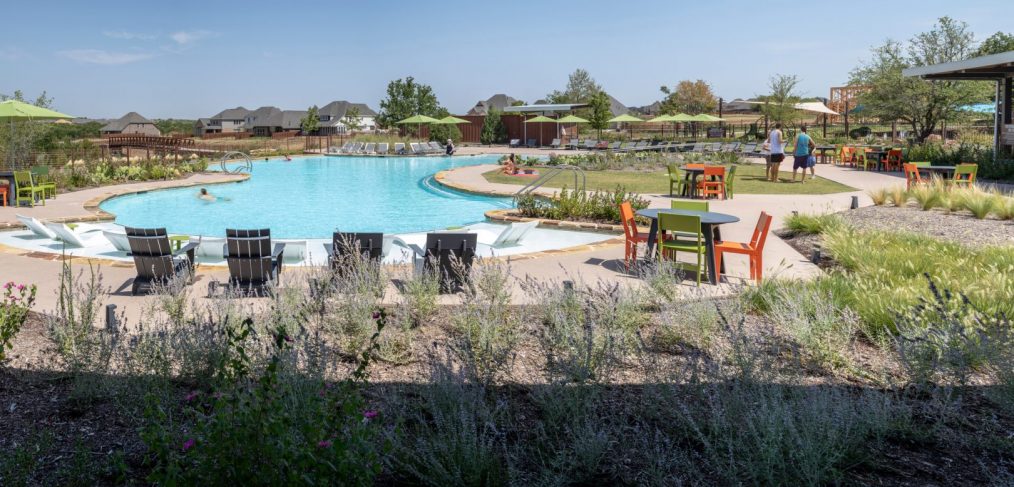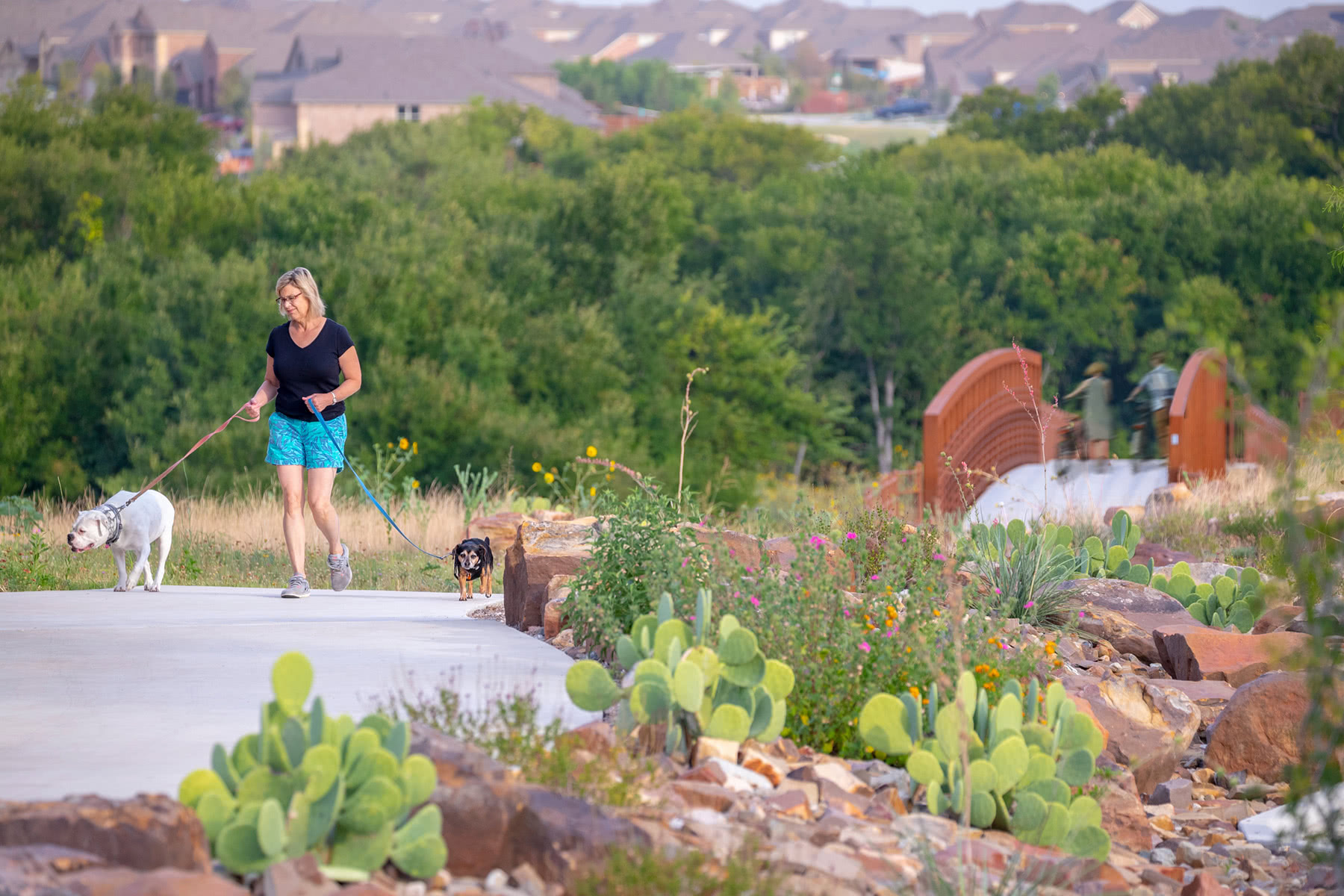
Could North Texas be the next “Blue Zone”?
CallisonRTKL’s Noel Aveton discusses how master planners and a handful of visionary developers are creating communities that connect and enhance well-being.
What’s a Blue Zone? Blue Zones are places and communities around the world that have been identified as having the world’s healthiest people. These are people who grow older without many of the diseases that we associate with old age, such as diabetes, cancer and Alzheimer’s, and they tend to live much longer than the rest of us. Researchers have identified many reasons behind this longevity, including genetics and diet, but social connectivity and strong multi-generational relationships are also a huge part of the equation. That’s where master planners and urban designers come in.
We’re seeing a real shift among developers, particularly where we work in North Texas, who are envisioning new ways of creating residential communities that genuinely make people healthier and more connected. On top of that, Fort Worth has joined the Blue Zone project, a voluntary commitment to helping communities across the U.S. live longer, healthier lives.
Nature, Nature, Nature
Here in Texas, we have an impressive regional trail network and, increasingly, developers are taking advantage of this incredible amenity. In the past, land adjacent to these trail networks may have been undevelopable because of being in a flood plain, for instance. Previously, the trend has also been to create very insular residential communities without many connections between neighbors or to amenities outside the development.
Developers are responding to the demands of an informed market by buying land next to trail systems and using it to connect neighborhood parks or public spaces that offer shopping and dining inside and outside their communities. These trails become an entirely new amenity that encourages residents to spend as much time in nature as possible. Some local governments are offering developers reimbursements for building next to trail systems as well, making it even more appealing to take a nature-first approach.

In case it wasn’t readily apparent, spending time in nature has numerous mental and physical benefits, from improved memory to lower stress to better eyesight for children. We have many clients ensuring residents have full access to nature. Newland Communities at our Canyon Falls project in Northlake, Argyle and Flower Mound, Texas is a great example of a developer who understands the intrinsic and extrinsic value of allocating a significant portion of the development to natural / public space.
Other developers, even those not close to trail systems, are preserving natural woodlands and setting aside large, connected open spaces that support pollinators and other local wildlife providing important ecosystem services. These areas are just one of the many ways developers are beginning to boost the daily points of connection to nature their residents experience.
Connecting Communities
As planners have long identified, car-centric suburban sprawl has created an increasingly isolated daily existence allowing neighbors to stay strangers. The upsurge of time spent interacting socially online has potentially pushed this isolated phenomenon to a breaking point. Modern, thoughtful communities are now developed with many design strategies aimed at improving social connections and enhancing quality of life. Even something as simple as wider sidewalks helps make a neighborhood friendlier to walkers, cyclists and nature lovers. Today, in communities like Canyon Falls, we are designing multiple community gathering spaces such as pools, lounges, dog parks, sports courts and game rooms. This gives people the chance to really get to know their neighbors across generations. Interestingly, strong inter-generational relationships and social networks are a cornerstone of Blue Zone communities around the world.
The Loneliness Epidemic
Outside of Blue Zone communities, particularly in the West, we’re seeing a real crisis surrounding loneliness. Even though we may feel more “connected” by technology than ever before, a full third of Americans over 45 say they are lonely and loneliness itself is a predictor of early death more serious than obesity. This may seem like an affliction that mostly affects older generations, but Generation Z (teenagers and people up to age 22) report the most feelings of loneliness out of any other group.
It all sounds depressing, but designers, master planners and developers are already helping to solve this problem and are becoming key influencers in making North Texas a new Blue Zone, as well as many other American cities. By designing communities that focus on how we can better connect people, we can go a long way to making sure people live happier lives. Developers who are doing this are thriving, proving we can truly balance economic gains with healthier communities.
